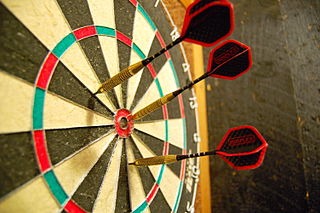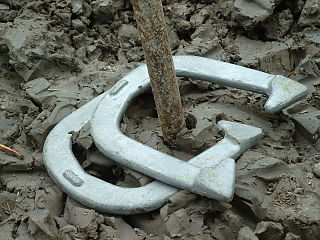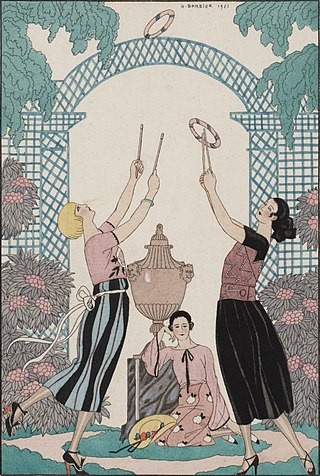
Insuknawr or Rod Pushing Sport is an indigenous game of Mizoram, a state in North-East India. [1]

Insuknawr or Rod Pushing Sport is an indigenous game of Mizoram, a state in North-East India. [1]
Earlier, the Mizo community depended on shifting cultivation for livelihood and their main crop was rice. For husking rice the Mizos used wooden mortar and pestle which were called ‘Sum’ and ‘Suk’. During the break of their tiresome rice husking which was done mainly by women the Mizo youngsters used this rice pounding wooden pestle ‘Suk’ to exhibit their manly prowess. There were different games using Suk as instrument. [2] are well known in addition to this rod pushing game. Sukkhawh is throwing Suk like a javelin, and Insukherh is a game in which two players holding Suk at each end and twisting with force to out play the opponent.
Of all these games, Insuknawr was the most popular among the Mizos. Zawlbuk, the center where young boys entering adulthood received informal education was the main place for this unique game. [3] However, the formal education system which received widespread support throughout Mizoram in 1940s onwards brought about the decline of Zawlbuk and these indigenous games. [4]
The game is played by two players, each player holding the rod under his arm, as in the game of tug of war. [5] The end of the rod should protrude for at least two inches under the armpit, and the centre of the rod must align with the centre of the circle.
In this contest, each player tries to push his opponent out of the ring, through the back or the side of the circle. If a player falls to the ground, or he releases Suk, he is declared to be the loser. No player is to throw his opponent off balance by pulling the latter's rod. An expert player can skid or slide around within the circle, but the game or round is not won until a player is successfully pushed out. A round is considered as drawn if no player is pushed out of the circle. If all three rounds are drawn, a tie-breaker is declared, without any time limit, until a player is pushed out.
A circle of 16 ft diameter with a straight Line across the circle at the center is drawn. Suk or a round wooden rod or bamboo rod shall be approximately 8 ft long and 2.5 - 3 inches in diameter.

Pétanque is a sport that falls into the category of boules sports. In these sports, players or teams play their boules/balls towards a target ball. In pétanque the objective is to score points by having boules closer to the target than the opponent after all boules have been thrown. This is achieved by throwing or rolling boules closer to the small target ball, officially called a jack, or by hitting the opponents' boules away from the target, while standing inside a circle with both feet on the ground. The game is normally and best played on hard dirt or gravel. It can be played in public areas in parks or in dedicated facilities called boulodromes.

Dodgeball is a team sport in which players on two opposing teams try to throw balls and hit opponents while avoiding being hit themselves. The objective of each team is to eliminate all members of the opposing team by hitting them with thrown balls, catching a ball thrown by an opponent, or inducing an opponent to commit a violation, such as stepping outside the court.

Darts or dart-throwing is a competitive sport in which two or more players bare-handedly throw small sharp-pointed projectiles known as darts at a round target known as a dartboard.

Carrom is a tabletop game of Indian origin in which players flick discs, attempting to knock them to the corners of the board. The game is very popular in the Indian subcontinent, and is known by various names in different languages. In South Asia, many clubs and cafés hold regular tournaments. Carrom is commonly played by families, including children, and at social functions. Different standards and rules exist in different areas. It became very popular in the United Kingdom and the Commonwealth during the early 20th century.It became very popular in the United Arab Emirates and the rest of the Persian Gulf and the Arabian peninsula during the Arab- Indian spice trade until this day

Mizoram is a landlocked state in northeast India, with Aizawl as its seat of government and largest city. Within India's northeast region, it is the southernmost state, sharing borders with three of the Seven Sister States, namely Tripura, Assam and Manipur, and also shares a 722-kilometre (449 mi) border with the neighbouring countries of Bangladesh and Myanmar. The state spans over an area of approximately 21,087 square kilometres, of which approximately 91% is forested. With an estimated population of 1.25 million in 2023, it is the second least populous state in the country.

Horseshoes is a lawn game played between two people using four horseshoes and two throwing targets (stakes) set in a lawn or sandbox area. The game is played by the players alternating turns tossing horseshoes at stakes in the ground, which are traditionally placed 40 feet (12 m) apart. Modern games use a more stylized U-shaped bar, about twice the size of an actual horseshoe.

Quoits is a traditional game which involves the throwing of metal, rope or rubber rings over a set distance, usually to land over or near a spike. The game of quoits encompasses several distinct variations.
Inbuan is a form of wrestling native to the people of Mizoram in India. Inbuan is said to have originated in the village of Dungtlang in 1750. It was recognized as a sport after the Mizo people migrated from Burma to the Lushai Hills.
Bolas criollas is a traditional team sport from Venezuela, very popular in the Llanos and most rural regions. It is one of the most representative icons of Llanero culture. Its origins can be traced back to traditional European boules sports, such as bocce and pétanque.

Pichenotte refers to a family of several disk-flicking games, mostly French Canadian in origin, including crokinole, pitchnut, and North American carrom, which may sometimes be played with small cue sticks. Pichenotte is a Canadian French word meaning 'flick', which is derived from the European French word pichenette, also meaning 'flick'. These folk games are in the public domain, and are not subject to copyright like a commercial board game. Nor are they patented games. However, the names Pichenotte and Pitchnut are registered trademarks in the United States. The game community site Knipsbrat.com states that, like the German name Knipsbrat ('flicking-board'), "pichenotte is another name for crokinole" The Canadian game board collection at the Quebec Museum of Civilization in Quebec City includes both the square carrom-type board and the round crokinole-type game Crokinole is also called pichenotte throughout much of North America. Modern-day tournaments have been held as far apart as Tavistock, Ontario, and Santa Fe and Albuquerque, New Mexico.
Traditional Filipino games or indigenous games in the Philippines are games that are played across multiple generations, usually using native materials or instruments. In the Philippines, due to limited resources for toys, children usually invent games that do not require anything but players. There are different kinds of Filipino traditional games which are well-suited for kids, and the games also stand as one of the different cultural and traditional games of the Philippines. Due to the variety of skills used in these games, they serve an important purpose in the physical and mental development of Filipino children. These games are also an important part of Filipino culture.

The game of graces was a popular activity for young girls during the early 1800s. The game was invented in France during the first quarter of the 19th century and called le jeu des graces. The game of graces was considered a proper game – one befitting young ladies and, supposedly, one that would make them more graceful.

Cornhole is a lawn game popular in North America in which players or teams take turns throwing fabric bean bags at a raised, angled board with a hole in its far end. The goal of the game is to score points by either landing a bag on the board or putting a bag through the hole.

X-Man (Korean: X맨) was a popular South Korean game show which ran from November 8, 2003 to April 8, 2007 on SBS. Its popularity peaked from 2004 to 2006. It was hosted by Yoo Jae-suk, Kang Ho-dong, Kim Je-dong, with Kim being successively replaced by Gong Hyung-jin, Park Kyung-lim, and Lee Hyuk-jae; only the first two were on the program since its inception.

Real World/Road Rules Challenge: The Gauntlet III is the 15th season of the MTV reality game show, The Challenge.

A footbag is a small, round bag usually filled with plastic pellets or sand, which is kicked into the air as part of a competitive game or as a display of dexterity. "Hacky Sack" is the name of a brand of footbag popular in the 1970s, which has since become a generic trademark.

Indigenous North American stickball is a team sport typically played on an open field where teams of players with two sticks each attempt to control and shoot a ball at the opposing team's goal. It shares similarities to the game of lacrosse. In Choctaw Stickball, "Opposing teams use handcrafted sticks, or kabocca, and a woven leather ball, or towa. Each team tries to advance the ball down the field to the other team's goalpost using only their sticks, never touching or throwing the ball with their hands. Points are scored when a player hits the opposing team's goalpost with the ball."

Ringball is a traditional South African sport that stems from basketball and has been played since 1907. The sport is now promoted in South Africa, Namibia, Botswana, Lesotho, India, and Mauritius to establish Ringball as an international sport. The sport is played by both men and women teams.

Punjabis play a wide variety of sports and games, ranging from modern games such as hockey and cricket, to the more traditional games such as Kabaddi, Kushtian (wrestling) and Khuddo khoondi. There are over 100 traditional games and sports of Punjab.

Bengali traditional games are traditional games that are played in rural parts of the historical region of Bengal. These games are typically played outside with limited resources. Many games have similarities to other traditional South Asian games.